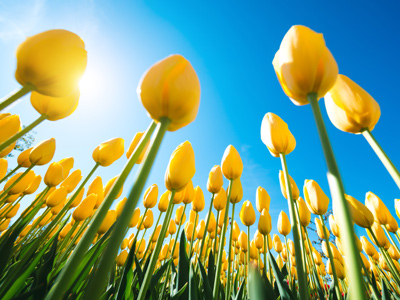
Unit 3 - Water Loss in Plants
This GCSE Biology quiz is all about transpiration. Transpiration is the process by which plants transport water upwards against the pull of gravity and it is made possible by water loss due to evaporation.
The minerals that a plant needs are carried through it dissolved in water that has come from the ground. Plants have no pump like the heart that could move the water through them and so they have evolved a different method of transporting fluids - transpiration.
Leaves contain spongy and palisade cells. Water on the surface of these evaporates and leaves the leaves by diffusion. Water is then drawn out of the xylem cells within the leaves to replace water lost by this evaporation. The xylem cells form continuous tubes down to the roots and, as water is lost from the leaves, more is drawn up from the roots - rather like when you drink through a drinking straw. Transpiration is continuous and so there is a slow but continuous flow of water through the xylem tubes.
Ready for more?
not all...
quizzers. Try to win a coveted spot on our Hall of Fame Page.







